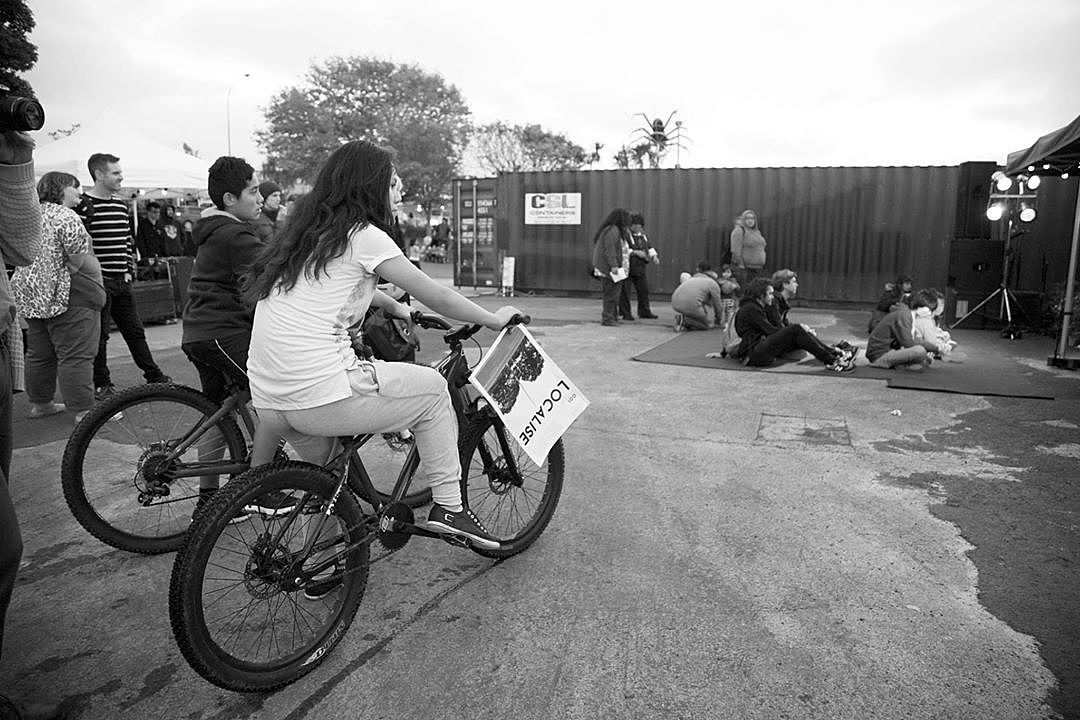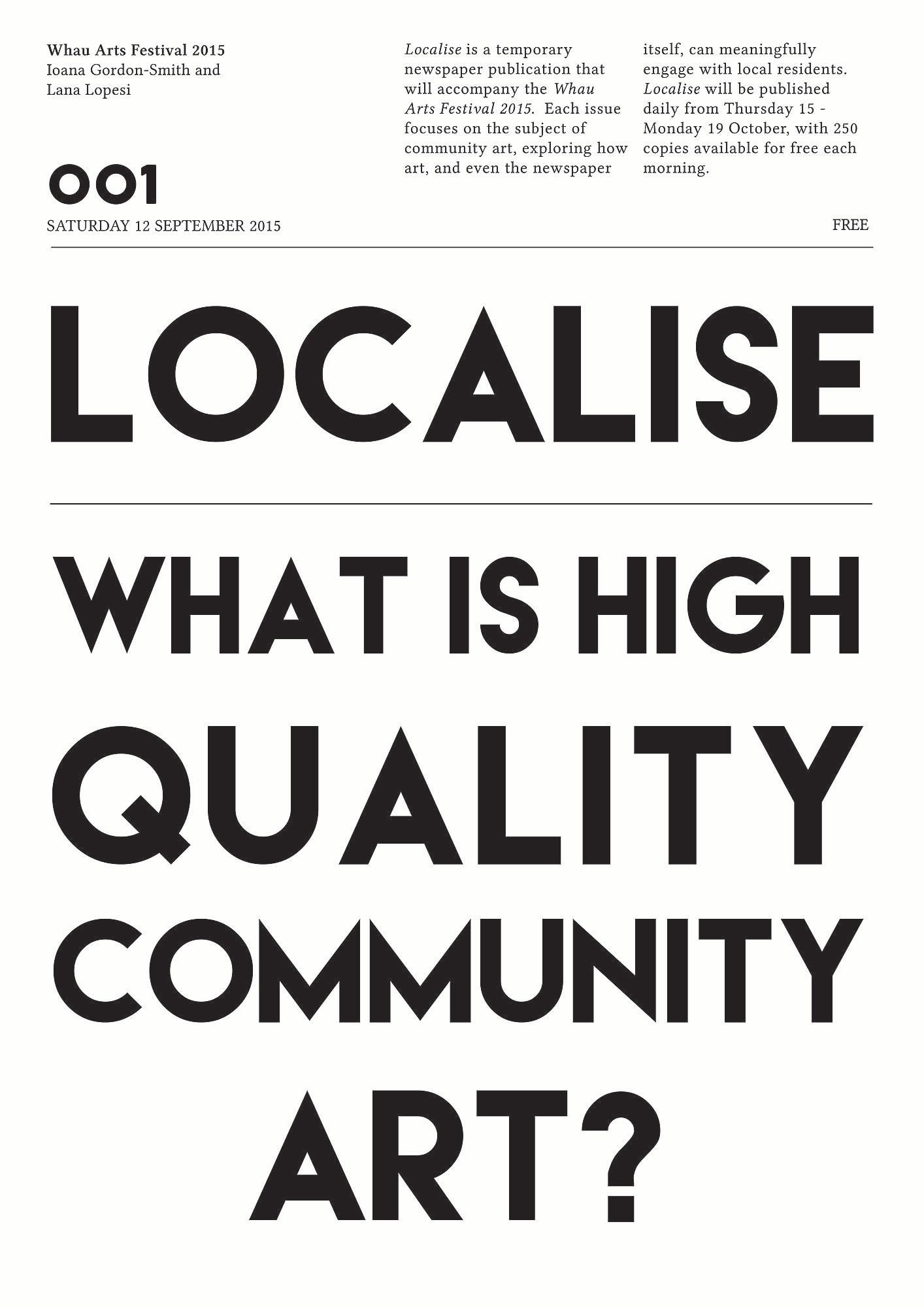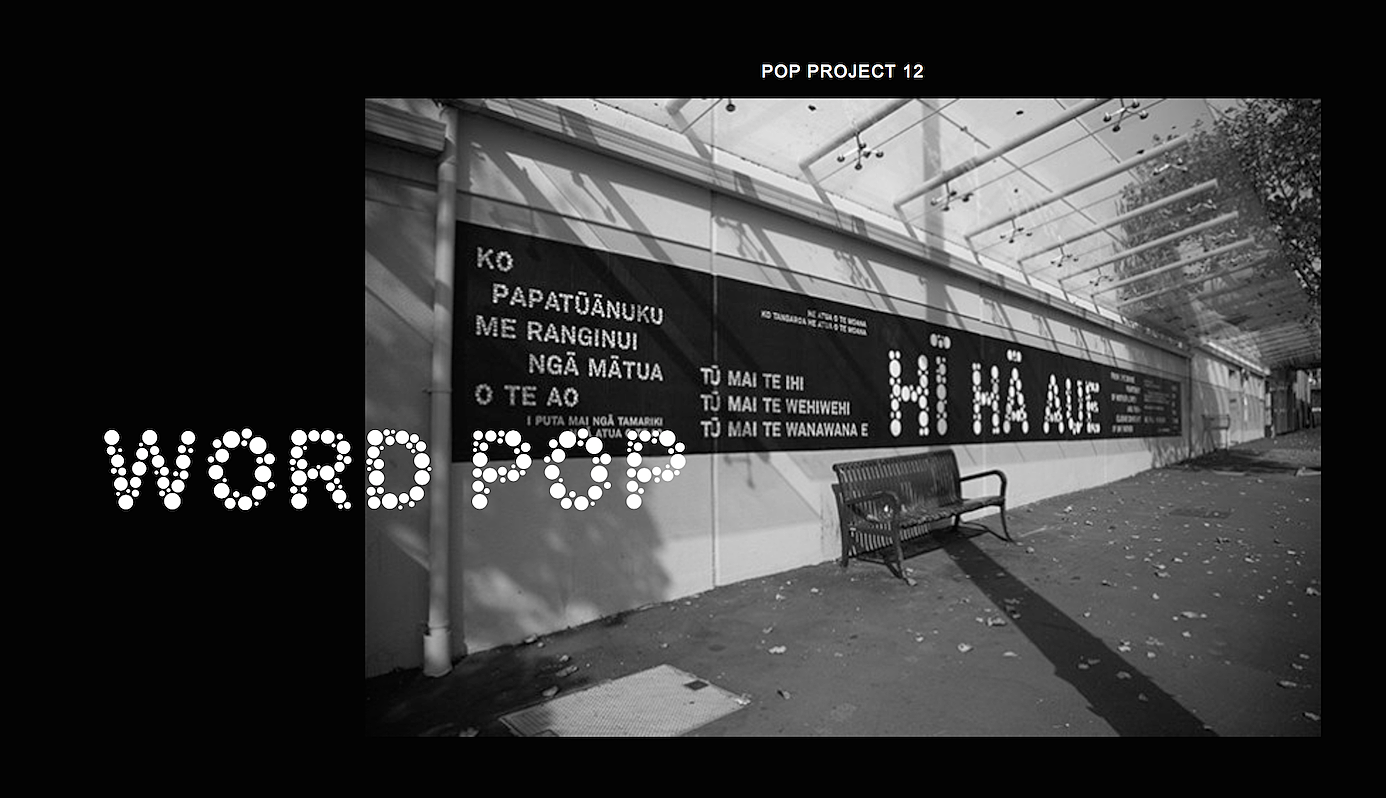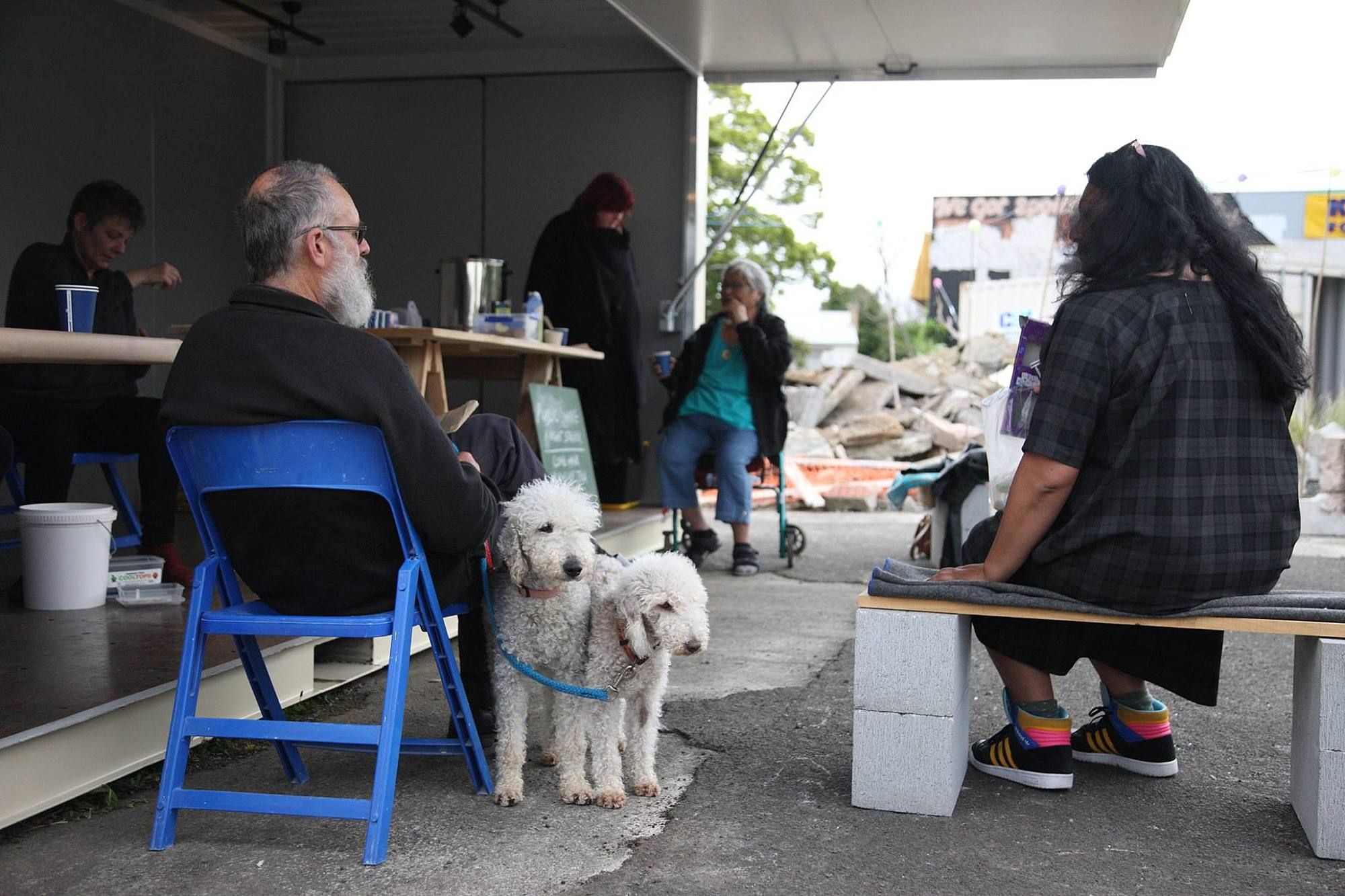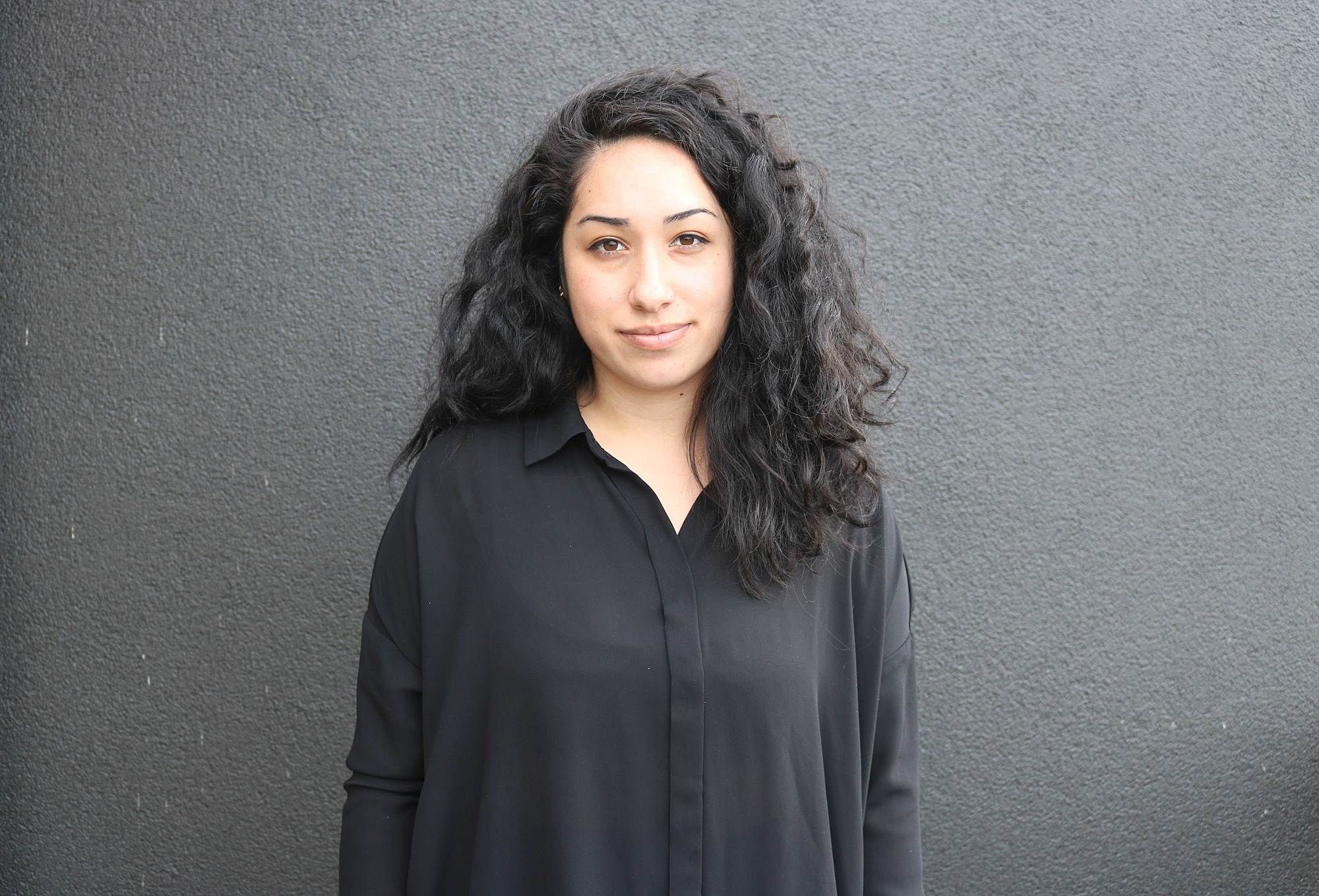The Engagement Exercise
Lana Lopesi on tick-box public art approaches
I have a large stake in community arts.
Community /kəˈmjuːnɪti/ (n.): a group of people living in the same place or having a particular characteristic in common.
or
a group of people who happen to be in a place at a certain time
or
a group of people with their own sets of circumstances and experiences that we then impose our own privileged ideas of their experiences onto
What makes high quality community art? That was the driving question behind Localise, a project Ioana Gordon-Smith and I recently finished at the 2015 Whau Arts Festival. We had a project lead-in of over six months, and in the early stages we met every week, often with Whau The People, the project’s commissioners. We worked with over 60 collaborators to produce five issues of a daily community content-driven newspaper.
High quality (adj.): the quality of being superior
The project had two dimensions. One was the commissioning of five essays from New Zealand practitioners who we felt had something at stake in the way they are making art with or for the community. These people included Balamohan Shingade, Local Time, Mark Amery, Louisa Afoa and Ema Tavola. The other dimension was an enquiry into whether publishing - or more specifically, the newspaper form - could be a mode for community art making.
In one way, this project was incredibly community focused. Most of the contributors were from or currently living in West Auckland or the Whau area, providing an emic voice. Most of this serendipitously fell into place as the collaboration process continued and people started to get wind of what we were producing, varying immensely from the initial curation of the publication. Although initially there was some scepticism from local businesses, even with the offer of free advertising, over time the community became increasingly involved.
While the community was obviously key, an equally if perhaps not even more exciting component was knowing that we would situate this temporary project in a wider community arts discourse through the commissioned essays. This openly self-reflexive component – calling for varied and conflicting responses to the very questions about quality and purposefulness of community practice that Localise was interested in – is non-existent in most art projects. Rather than separating the ‘art conversation’ and the ‘community conversation’, these commissioned essays held equal weight to the community-driven content, both providing windows to the politics of art and the Whau. In this instance, we were creating an art object that would have a very different purpose post-Whau Arts Festival. It would endure as a highly-designed print publication, framed as a newspaper.
Arts festival (n.): a festival that features the arts in a wide sense of the word, not just visual arts.
or
a highly condensed week of month of programmed art events framed around a premise - location, culture
Essentially, what this project was trying to discover was this: how do we know when we’ve made high quality community art, and what measures do we use? Community art does not rely on the same type of judgment systems as object-based practices. It was distributed for free, so there was no entry into a financial economy’s set of valuations. There has been no criticism about it either, mirroring how many community practices seem to fall outside of reviewing culture.
Yet the current measures of engagement we’re left to rely on seem to be relatively shallow, in that they refer specifically to numbers through the door, rather than a qualitative look at engaging practices and long-lasting effects. We distributed 1500 print publications in total (with many of those also now housed in libraries and reading rooms across the country), not including online views, and yet that number surely doesn’t reflect the number of people who sat down and read through the 5-publication series. Half of them could be sitting in rubbish bins or lining kitty litter trays right now. But keeping within current standards of measuring community engagement, that would still tick all the boxes.
Engagement ɪnˈɡeɪdʒm(ə)nt,ɛn-/ (n.): the act of engaging or state of being engaged
or
a form of assessment lacking official ways of measuring
More often than not, these engagement methods or objectives are set by those commissioning the projects – commonly galleries and local councils. It is in this stage that guidelines and markers are set that the project needs to deliver upon. Usually, this will be a quantitative exercise relating to specific socio-economic groups. With no other discourses of critique surrounding community art specific to New Zealand, these engagement methods become the benchmark measure of ‘high quality’ (a funding buzz phrase).
It’s no secret that the successful commissioning of projects centres around diverse audiences, evident at community level arts funding, and even funding from Creative New Zealand for regional or national projects. But this affirmative action model of gallery programming (programming Māori artists in Matariki, Pacific artists during Urbanesia, and Indian artists during Diwali) mirrored by public space programming, is not effective is bringing genuine diversity into our arts ecologies. Rather, it reveals a tokenistic calendar of strategies for particular times of the year.
The Whau Arts Festival, on the other hand, is located specifically in the ‘Whau’ region. This kind of festival framework means that diversity is inherent not because of an ordained monocultural festival or occasion, but because of the human geography it relies on. The inclusion/exclusion factor has nothing to do with socio-economic groups, but rather a people who happen to be in a certain space at a certain time. Balamohan Shingade argues for a similar place-based definition of community, or adda, which, rather than focusing on “bonds” (identity, resources, situations etc) which encourage borders and closure, prioritises a community of openness united by a communal concern, not pre-given identity. The idea of the adda questions current concepts of diversity as being open to difference.
Diversity dʌɪˈvəːsɪti,dɪ-/ (n.): the state or quality of being different or varied
or
a term used to disguise a box-ticking exercise as a result of calls for equality and affirmative action
or
an excuse for typecasting artists and not actually understanding diversity beyond hegemonic norms
Currently, high-quality community art seems to have intentions of enacting change (often with participatory elements) whether the community sees need for it or not. In here lies the complication of what is high quality community art; the terms and intentions tend to be very noble, but very detached. For any change to be successful, there is a requirement for a joint interest in the cause, yet we are obsessed with accessing ‘diversity’ before accessing people themselves. The language glazing over project commissions is directly inhibiting genuine community engagement and high quality community art.
These levels of audience engagement inevitably take time. Currently, there is an aggressive move, especially on a local council level, to commission very temporary projects in public space. These last a week or even for days, trying and hit what are often neither solid nor logical measures of engagement in the blink of an eye. It’s completely understandable why these projects exist. They are cheap, low maintenance, and require little ongoing management after setup. And when an artist who cares about community delivers something good, they tick boxes, and are incredibly beneficial to the stake holders.
Public space (n.): a social space that is generally open and accessible to people. Roads (including the pavement), public squares, parks and beaches are typically considered public space.
or
a place where perceived gallery barriers can be broken down
or
a thoroughfare where you spend your lunch breaks or walk through and don’t always want interruptions
The country fell in love with public space projects again after Christchurch’s Gap Filler, a “creative urban regeneration initiative that facilitates a wide range of temporary projects, events, installations and amenities in the city”. Gap Filler, which recently marked its fifth birthday, responded to the changing architecture post-earthquake in Christchurch. The small scale and quick turnaround meant that projects could be both experimental and fun, providing a much-needed reprieve from the new realities post-earthquake. This temporary public art had a real purpose, and the accounts I’ve read suggest Gap Filler projects were truly popular amongst Christchurch residents.
Gap Filler has in many situations become a model for council commissioning of temporary projects. What has been overlooked, though, is that the success of Gap Filler relied on the audience connector of survival and trauma. These projects provided relief for an instant community, united by something far more significant than location.
One of the models keen to emulate Gap Filler’s success is Pop, a temporary public art project that runs in Central Auckland and was commissioned by the Waitematā Local Board. Pop itself has been branded by design agency Alt Group, providing it with its own cohesive look right down to a typeface. Similar to Gap Filler, there’s a sense of connecting disparate or short-lived projects under one name, brand or framework so that they share some type of recognisable attribute, adding the project's overall aura of ‘quality’.
But what Pop in particular highlights is the loss of the intrinsically political nature of street art. The culture of pasting is now controlled by agencies like Phantom, who literally own public space. As well, we see increased regulations of murals. In fact, our most prominent graffiti artists are increasingly moving toward gallery-based practices where funding and longevity aren’t such a pitched battle. In the midst of this. projects such as Pop reveal local council’s attempts to shift the nature of what we see as public art. No longer an organic product of a culture coming up from below, it’s marketed as a series of ‘happenings’ generating instant and transient communities.
Both these projects ran only in central cities, yet with projects like TEZA, we now see similar temporary art models moving into lower socio-economic areas where the artist-council-audience dynamic is incredibly different. From my experience of lower socio-economic areas, audiences need time to build up trust. These are communities that face continual discrimination and feel external pressures for perhaps unwanted change. Also, it goes without saying that there is usually an immense sense of pride for their place. This is why spaces like Fresh Gallery Ōtara work so well – open, permanent spaces that a community has a sense of ownership over, that gives them an understanding and appreciation of a place that houses art even if they don’t vibe off the art itself. However, there are not always resources and infrastructure in place for spaces like this to be established. Pop-up projects in empty retail spaces seem to be a common way to counter this, providing a space for slightly more permanent works while also trying to revitalise rundown areas.
Empty retail space: a retail space not currently occupied by a long term tenant
or
a result of gentrification and New Zealand’s love of mall culture
I’ve just come out of my fourth project in an empty retail space, and it’s actually incredibly difficult. Generally there is no budget for setup, meaning the space is completely empty with no tables, chairs and sometimes no power. You vacuum, clean the windows and repair what you can of the walls with no support staff on hand, liaising with landlords. In a week, you’re expected to turn these empty spaces into sites for community engagement. Which means making them comfortable and welcoming - which with no budget is almost impossible. And when you do manage to borrow, buy and haggle things for the space, by the time people actually get brave enough to come and in and talk to you about your project or the space, you leave. The next person (if there is another project in that space) then has to go through the exact same process.
More than that though, you have to ask - why are the spaces empty? My last three projects have been commissioned at a local council level to “generate community arts and revitalise (insert area name here)”. Ironically, each project was in a strip of shops either next to or near a mall. In New Zealand’s successful adoption of American mall culture, there was a clear oversight of the effects that would have on small strip business owners. 25 years down the track, we see a conscious effort by the same people who consented malls to be built in the first place to commission temporary art - to deliver up some type of revitalisation of the business districts they left behind. Local boards need to develop co-ordinated approaches to the question of dying shopping strips and suburban decay in terms of what very local economic development would look like. It’s tough, but pop-ups and 'happenings' of an artistic nature are unable to do the heavy lifting.
At a Bushwick TedX in June 2015, Ethan Pettit spoke about how public art signals gentrification, and I think he’s right. Over 2015 the community art I’ve made in public space, including Localise (in Avondale) has been in places in the midst of gentrification. Am I the artist implicit in gentrification, and are these underfunded art projects supposed to save a community that’s inevitably changing? Because that’s more pressure than I sign up to when I make art.
*
At the end of the day, artists who are out to practice some form of community art are at the whim of the commissioners – it’s not sexy or cutting-edge enough to draw on philanthropy, and the local businesses it’s meant to sustain are neither organised nor well-off enough to even think about signing a blank cheque. So when will our commissioners better empower our artists to make that high quality community art they keep referring to? Community art comes with immense responsibility and privilege, but in all the buzzwords, pressure to deliver and attempts to create change we’re losing the question of the art itself. Collaboration or even basic consultation isn't 'magic wanded' into being by mentioning a community-collaborative philosophy enough times in a funding application. Commissioners (who should be used to the realities of consultation in everything else) should find ways of factoring this in. Artists should not be saviours riding in on white horses to rectify the effects of the deregulated economy. Instead maybe it’s more important to build trust, then create things that are meaningful in a way that reciprocates that trust. The best pay off for all the stakeholders.
There’s a conundrum really. Something is missing from within our community projects. Very rarely is there a self-reflexive examination of what is working, where and why. Instead, we seem to be moving over the top of each other in constant overlap, using the same models over and over again in places with incredibly different social makeups, where they probably don’t deliver on the broad metrics they claim to, and may not even be welcome.
And yet, working against all these constraints, some of us are making it work. Auckland based collective Public Share pull off high quality, site responsive, temporary, well consulted and fully collaborative all over a cup of tea (literally). In the container next to ours at the Whau Arts Festival, sitting, meeting, greeting and gifting, the seven-piece collective delivered ‘moments’ that were short-lived and philanthropic but meaningful and genuine exchanges of time.
They’re a good start. In the move away for the ‘magic wand’ community project perhaps we will find a framework that will encourage genuine thought be given to the continuous rolling out the arts festival, the empty retail shop and the public space.
Cover Image: Whau Arts Festival 2015, Photo Courtesy of Whau The People
